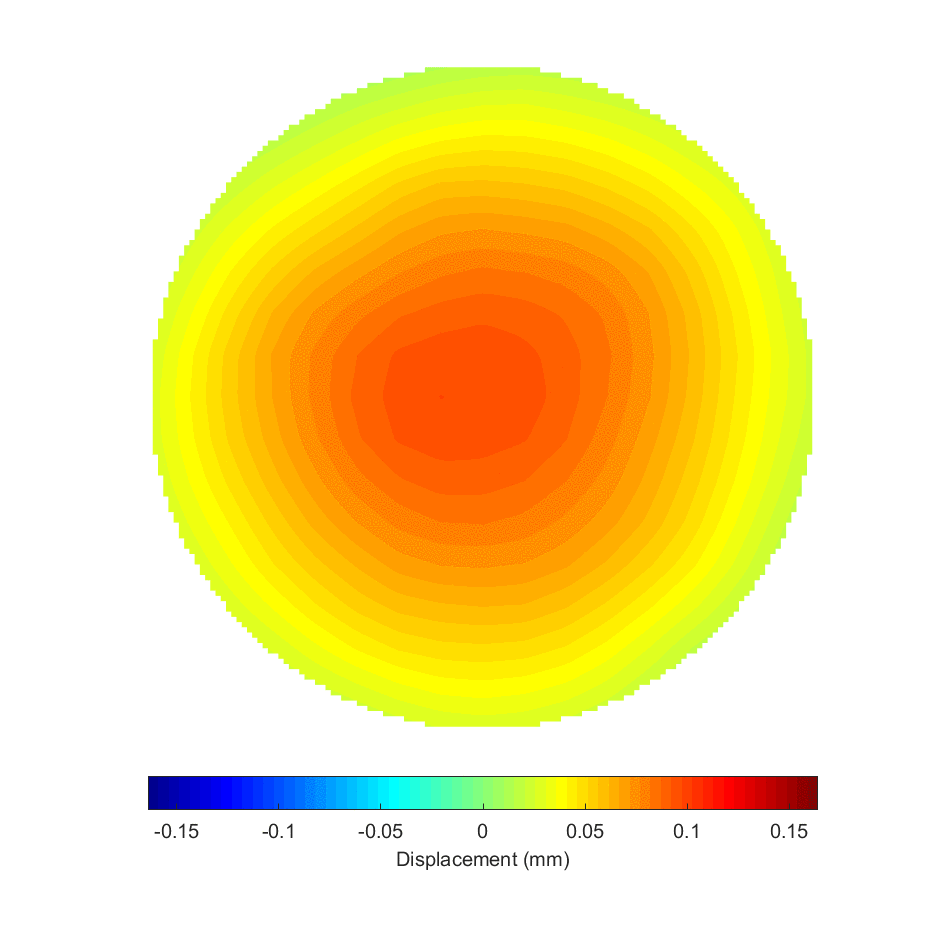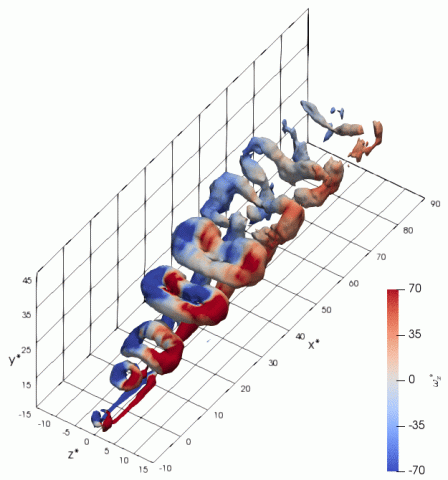Synthetic jet actuators (SJA) are zero-net-mass-flux devices that produce vortex rings which break down to form a jet, injecting momentum into the surrounding flow field (Fig. 1). Since SJA are self-contained electrically-powered devices, they have considerable weight and infrastructure advantages over other aerodynamic flow control methods, such as conventional steady blowing jets or sweeping jets which require a pressurized air source. In this project, we have derived a semi-empirical model to guide design parameter selection, developed a novel fabrication process for SJAs (Fig. 2), captured the presence of higher mode shapes in the actuators at certain conditions, and analyzed the interaction between synthetic jets and a turbulent boundary layer typical of flow control applications.
Our model couples the structural behavior of the SJA’s piezoelectric bimorph with a fluidic representation of the actuator cavity. It succeeds in predicting the actuator's center displacement (Fig. 3) and jet velocity for a range of physical conditions. The carbon fiber composite fabrication process developed served both to improve the robustness of the bimorphs used in the actuators and to decrease the amount of damping present (Fig. 2). This meant less power was needed to keep them resonating at a given displacement level. At certain physical conditions, some actuators showed an unexpected drop in their center displacement. By using synchronous displacement mapping of the actuator's surface, this was seen to be caused by a change from a simple domed mode shape (Fig. 4-a) to higher mode shapes (Fig. 4-b). Additional improvements to the model have allowed it to correct for the presence of these higher mode shapes. Stereoscopic particle image velocimetry (SPIV) was used in wind tunnel experiments to identify the structures formed by the interaction of a synthetic jet at various pitch and skew angles with a turbulent boundary layer (Fig. 5).

Left to right: Figure 1. Conceptual sketch of a synthetic jet actuator. Figure 2. Carbon fiber piezoelectric bimorph fabricated in-house. Figure 3. Variation in bimorph center displacement with frequency for experimental results and model predictions.

Figure 4a. Experimental displacement maps of SJA bimorphs experiencing the first axisymmetric mode.

Figure 4b. Experimental displacement maps of SJA bimorphs experiencing a higher, non-axisymmetric mode.

Figure 5. Experimental SPIV measurements of a synthetic jet interacting with a turbulent boundary layer shown as an isosurface of Q-criterion colored by normalized streamwise vorticity. (Freestream flow is from bottom left to top right.)